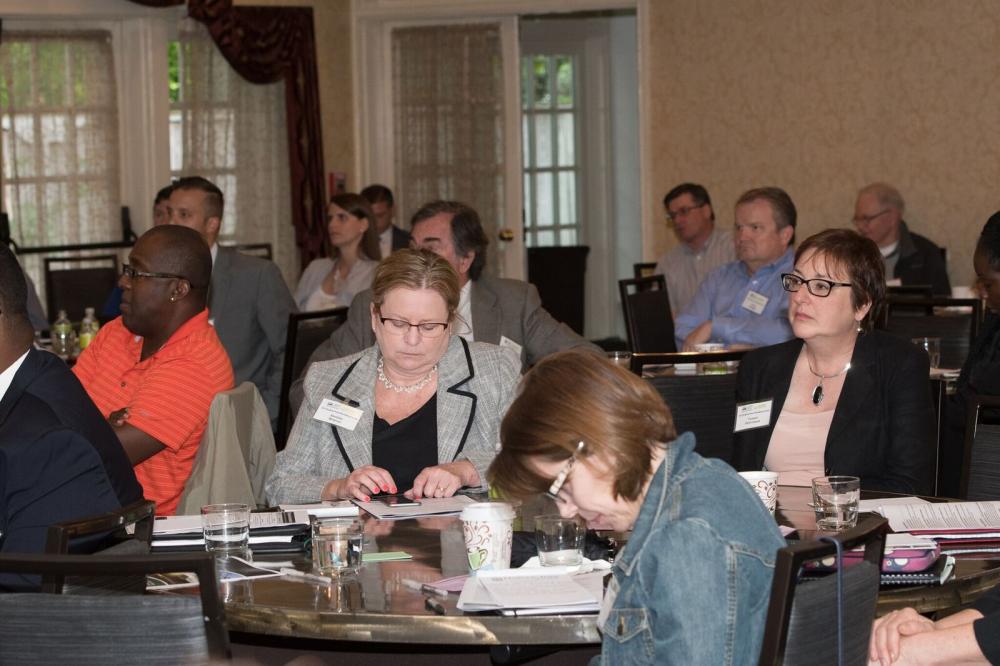Nearly 200 Stakeholders Discuss Internet Access Equity at Regional Rural Broadband Forum
When nearly 200 business leaders, economic development professionals and state and local government officials came together to discuss bringing affordable, high-speed internet service to rural Maryland, the “why” was not up for debate. However, when it came to “how” the options were numerous and the financing was challenging to say the least.

Josh Hastings, RMC chair, addresses the attendees at the recent Regional Rural Broadband Forum. Photo credit: Harry Bosk.
Hosted by event partners the Rural Maryland Council and USDA Rural Development, the program titled the Regional Rural Broadband Forum was presented recently in Annapolis. The forum unofficially launched the work of a special task force enacted by Maryland’s General Assembly, which was signed into law on May 25.
Charlotte Davis, executive director of the Rural Maryland Council, chairs the Task Force on Rural Internet, Broadband, Wireless and Cellular Service. Over the next several months, Davis and her colleagues will research redundancies and gaps in service and funding options needed to bring digital equity to rural Maryland. By November the task force will report its findings and recommendations to Governor Hogan.
The program included six sessions providing attendees with information ranging from the different broadband technologies commonly used in rural communities to best practices used in New York’s “Broadband for All” initiative.
The day’s discussions often came back to how to create sustainable high-speed broadband access in areas with low population density. “Admittedly for a business whose mission is to turn a profit providing high speed internet in rural areas is a recipe for market failure,” said Davis. “Clearly the solution will be providing incentives and grants to make the project more doable and attractive,” she added.

Attendees at a group session at the recent Regional Rural Broadband Forum, hosted by event partners the Rural Maryland Council (RMC) and USDA Rural Development (RD). The forum included six sessions providing attendees with information ranging from the different broadband technologies commonly used in rural communities to best practices used in New York’s “Broadband for All” initiative.
The tone of the forum remained optimistic despite the acknowledgement that there will be no easy solutions. “We cannot have an equal society without equal access to broadband,” said RMC chair Josh Hastings.
Chiming in on that note was Maryland State Senator Adelaide C. Eckardt. “It is all about getting connected and for us (in rural areas) it is the art of the possible. It all works better when we work together,” she said.
Founded in 1994, the Rural Maryland Council serves as the state’s federally designated rural development council and functions as a voice for rural Maryland, advocating for and helping rural communities and businesses across the state to flourish and to gain equity to its suburban and urban counterparts. To learn more call (410) 841-5774, email rmc.mda@maryland.gov or connect with the Rural Maryland Council at facebook.com/RuralMaryland or on Twitter @RuralMaryland.
USDA Rural Development is committed to improving the economy and quality of life in rural America. RD provides loans and grants to help expand economic opportunities and create jobs in rural areas. This assistance supports infrastructure improvements; business development; homeownership; community services such as schools, public safety and health care; and high-speed internet access in rural areas. For more information, visit the USDA website.
For more information on the Regional Rural Broadband Forum, call (410) 841-5774 or visit their website.

 1-888-373-7888
1-888-373-7888 233733
233733